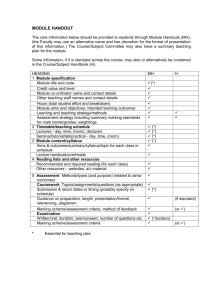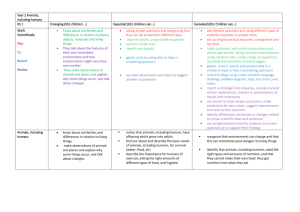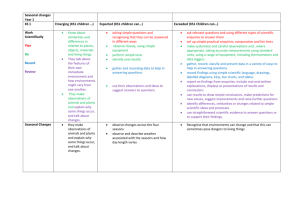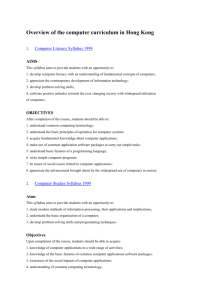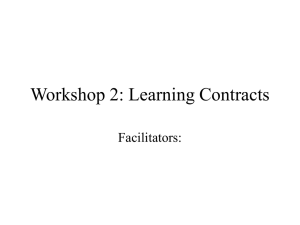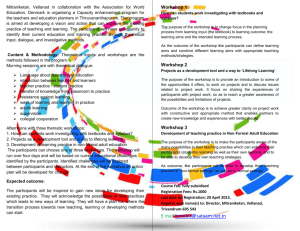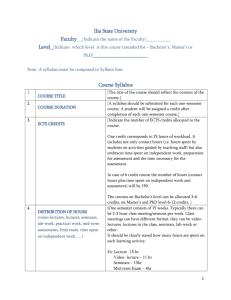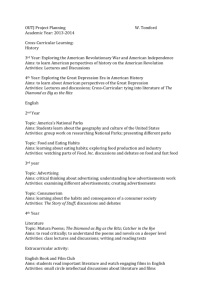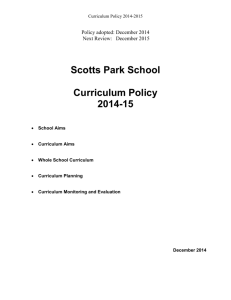RE and the new primary curriculum
advertisement
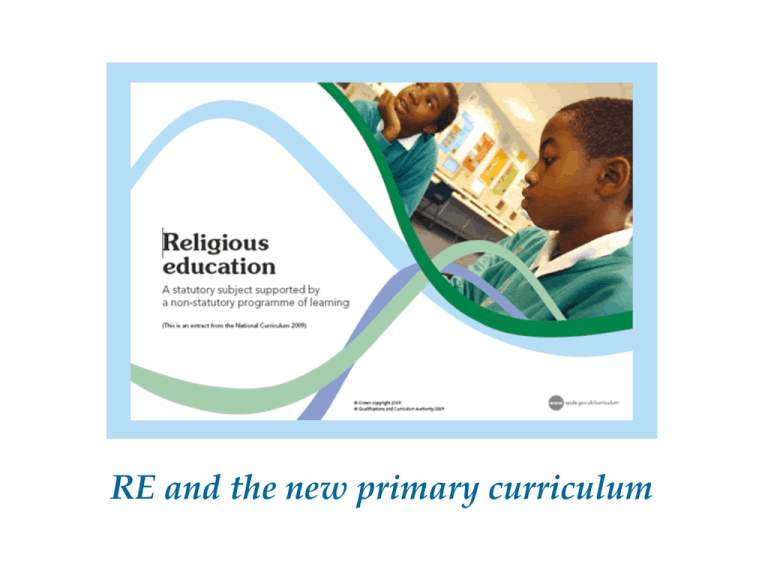
RE and the new primary curriculum “RE has an important role in preparing children for adult life, employment and lifelong learning. It enables them to develop respect for and sensitivity to others, and enables children to challenge prejudice. In these ways it contributes to children’s wellbeing and promotes ways in which communities can live and work together.” (The National Curriculum Primary Handbook.) No change there! QCDA website for the new curriculum A new UK Government took office on 11 May. As a result the content on this site may not reflect current Government policy. All statutory guidance and legislation published on this site continues to reflect the current legal position unless indicated otherwise. http://curriculum.qcda.gov.uk/new-primary-curriculum/areasof-learning/religious-education/index.aspx Content Learning One of the biggest differences in the new curriculum, which will also affect how RE is taught, is that the focus has shifted from ‘content’ to ‘learning’, an approach that helps children to develop the skills necessary to facilitate their own exploration of a subject. Suggestions that were made for SACREs to keep in mind when it came to revising the agreed syllabus: The quality of the learner experience has to be the prime focus. It should include a mixture of discrete and cross-curricular units. The design of the curriculum was important: RE can be improved by paying attention to the structure, i.e. what type of structure will best engage teachers. Taking into account the local context, there should be a balance between big ideas (e.g. forms of expressing meaning; values and commitments; identity, diversity and belonging) and specific content. There should be a cross-fertilising partnership between local and national bodies. The SACRE/LA partnership is responsible for investment, ownership and understanding of the locally agreed syllabus Each of the seven programmes of learning in the new primary curriculum follow the same structure: Curriculum aims: the three broad aims that underpin the process of curriculum design. These aims are to enable all young people to become: successful learners who enjoy learning, make progress and achieve confident individuals who are able to live safe, healthy and fulfilling lives responsible citizens who make a positive contribution to society. This is followed by an importance statement, which describes the distinctive contribution of the area to a child’s development and how this area of learning helps to meet the curriculum aims. Provokes challenging questions about meaning and purpose of life. Develops understanding of the nature of religion and belief Opportunities for reflection and spiritual development Enables children to flourish individually, within their communities and as citizens in a diverse society and global community. Essential knowledge The big ideas children need to know about and understand to lay the foundations for deeper learning in further stages of their education. Beliefs, teachings and sources Practices and ways of life Forms of expressing meaning Identity, diversity and belonging Meaning, purpose and truth Values and commitments Key skills The important skills and processes children need to develop in this distinct phase of education to prepare them for future learning. Identify questions and define enquiries, using a range of methods, media and sources. Carry out and develop enquiries by gathering, comparing, interpreting and analysing a range of information, ideas and viewpoints. Present findings, suggest interpretations, express ideas and feelings and develop arguments. Use empathy, critical thought and reflection to evaluate their learning and how it might apply to their own and others’ lives. Cross-curricular studies Opportunities to enrich and enhance children’s learning and make connections across the curriculum. Provide opportunities to develop and apply literacy, numeracy and ICT skills. Provide opportunities for personal, emotional, spiritual, moral, social and cultural development. Provide opportunities to enhance understanding of religions and beliefs through making links to other areas of learning and to wider issues of interest and importance. Breadth of learning The range and context for learning to help children acquire the essential knowledge and key skills. Curriculum progression What children should be taught at early, middle and later primary stages to help curriculum planning. Feedback from schools already implementing the new approach Telling stories: children need to learn that they have their own stories to tell, just as ‘inspirational’ figures tell stories. There are lots of ways of structuring learning in RE and not one way fits all schools. Examples include: Taking existing modules in the agreed syllabus and linking them to other areas of the curriculum. Investigative learning: using the four key skills as the basis for learning through discovery. Creative curriculum: linking RE with subjects not ordinarily considered together, e.g. RE and art. Days/weeks devoted entirely to RE. When it comes to all-school planning, often the first step is to generate a clear, exploratory, RE-relevant question. Then the learning experience can be led by RE. Some examples: KS1 Belonging: who do you think I am? KS1 Stories with meaning. In a year 5 class, a character story from the Buddhist tradition was linked to learning about Buddhism, as well as to a dance lesson inspired by meditation. A year 6 unit on life and death was linked to a history lesson on Britain since the 1930s.
